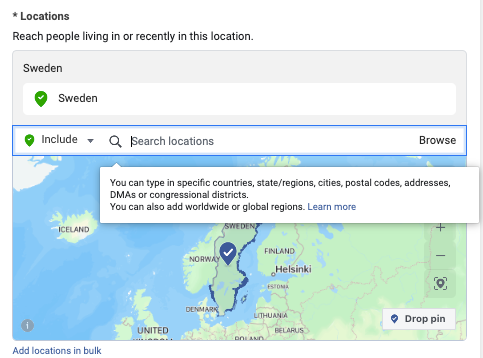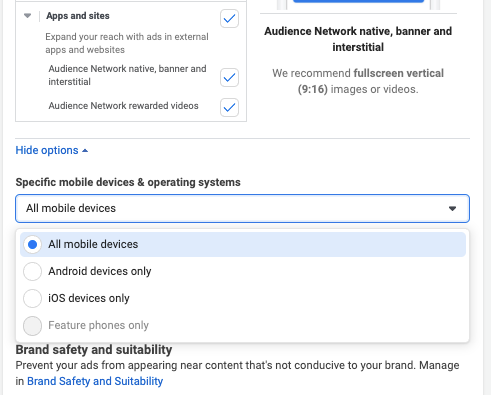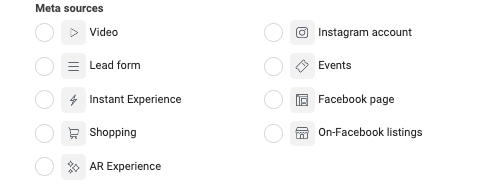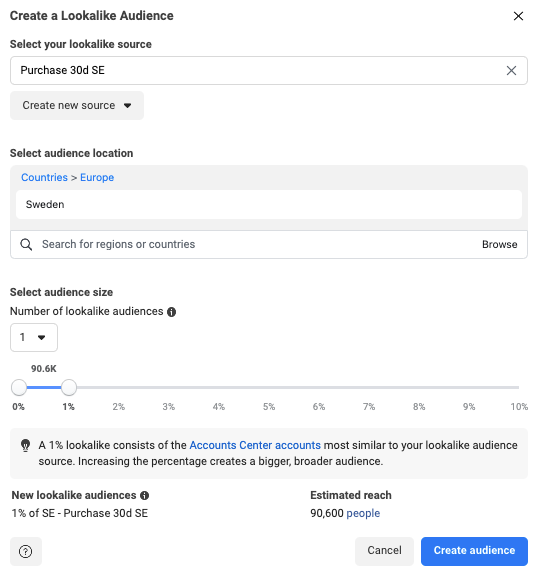The 2023 Meta Ads Targeting Guide - Everything you need to know and useful tips
Ads targeting is key in effective advertising in Paid Social Media, especially on platforms like Meta. Meta, which was previously known as Facebook, currently contains social media platforms like Facebook, Instagram, Messenger and the newest addition Threads. Meta offers many opportunities to connect with your customers, but more importantly find new prospects that can become recurring customers.
Effective targeting on Meta is key for successful advertising. If you go too broad you’ll most likely deliver your ads to users that think your ads are irrelevant, however if you target too narrow you will miss out on reaching potential prospects, therefore missing potential sales. Both will ultimately result in higher costs and less conversion. Easier said than done finding the balance between the two, so how do we target ads effectively on Meta?
Before we go into the specifics, 2023 targeting updates and tips based on our experience, let's give a quick overview of the three different types of audiences that you work with in ads manager on Meta:
- Core Audiences: This is the default audiences available in Ads Manager these targeting options are location, demographics, interests, and behaviors.
- Custom Audiences: These audiences are created using your brands Meta data (includes interactions with your brand on Facebook and Instagram) and your brand data (includes interactions on website and customer lists).
- Lookalike Audiences: You can create a target audience based on the custom audiences you’ve created. Meta will then target potential customers that share similar traits and behaviors to the source you’ve chosen.
Core audience
Core audiences in Meta advertising can be compared to traditional marketing targeting. They can be divided into geographical, demographical, behavioral and interests. This is data that Meta owns and is based on Facebook and Instagram user behavior and voluntary given information.

Geographical is as simple as where your customers are located. Ads manager offers you the ability to target specific countries, continents, cities or areas with a certain perimeter. It is important to take shipping limitations into account when choosing a geographical area for your ads targeting. During 2023 Meta removed all but one geographical targeting option and you’re now only able to target “living in or recently in this location”.
Tip! We recommend avoiding targeting a small geographical area, as a small audience size will limit Metas algorithms to find prospects, often resulting in increased cost. Aim for targeting a country or a few countries. The exception is advertising for local events and in big cities that are densely populated.

Demographical basics are gender with men, women and all to choose from and ages between 18-65+, as Meta does not allow advertising to minors. Additionally under “Detailed Targeting” you can target education, financial, life events, parents, relationship and work.
Tip! Try creating different ad content and copy to target different age groups. If you know that certain product categories are popular and often purchased by a certain age group. E.g. if you are a beauty brand, anti-aging products may be suitable to advertise to an older age segment and acne products for a younger segment. If you sell toys or children clothes you can use the demographics to target parents that have children in specific ages.
Interests are based on what different users on Facebook and Instagram have interacted with. There are a wide range of interests in Meta ads manager, however due to data privacy issues more and more interests are stacked together, e.g previously you could choose olympics by year and now they are all gathered under olympics.
Tip! Interests have had a revival during 2023 and are again performing well, we recommend to stack different relevant interests to expand the target audience. We also recommend trying neighboring interests. For instance if you sell makeup products try targeting hair and skin care interests as they are often associated with one another.

Behavioural is a bit harder to define in regards to what is available in Meta. The main behavioral areas are mobile device users, shopping behaviors and travels. However, behavioral targeting has not been working well outside of the US, so we therefore recommend you to not use this targeting method.
Tip! If you want your ads to target specifically android or iPhone users, we recommend instead of using behavioral metrics to go below ad placement and choose “Show more options” and under “Specific mobile devices & operating systems” choose IOS or Android. This ensures that your ads will only be shown on those specific devices.
Custom Audiences
Custom audiences can be divided into two categories: Your sources and Meta sources. Custom audiences are ideal for creating retargeting ads, meaning ads that are presented to an audience that previously have interacted with your brand in some way. Important to note is that in order for custom audiences to be updated and contain correct data, it is important to set up the pixel to your website correctly, and preferably implement conversion API, otherwise the data used for custom audiences will be flawed and incomplete.

Your sources in Meta Ads Targeting includes your website traffic and activity, app activity, customer lists and offline activity. Additionally, during 2023 Meta launched the ability to build custom target audiences based on how people have interacted with products from your catalog. Regular website traffic and activity allows you to create audiences based on how customers have triggered a certain event on a website like; visited your website, visited a landing page, viewed certain content on site, added to cart or made a purchase. The difference between website and catalog targeting is that you can now segment your products and create product sets that you can use to target in a similar way.
Tip! Create different custom audiences to retarget and use different creatives for the different stages depending on shown purchase intent. E.g a website visitor has lower intent and could be shown a bestseller or another customer's review of a product to persuade them. While for a customer that has added a product to cart or initiated checkout could be shown a dynamic ad of the product and highlight information of shipping alternatives or free returns.

Meta sources include data of interactions consumers have had on Facebook and Instagram. One of the benefits to using Meta data is the quality of the data, as it is not affected by IOS 14 and other third party cookie tracking issues. In addition to reaching users that have interacted with your Facebook and Instagram pages, Meta sources also include users that have filled out a lead form or interacted with your instant experiences and shopping.
Tip! If your brand has active followers on Facebook and Instagram that are engaged in your organic content, try targeting this audience for questionnaires or testing the new products to gain customer insight.
Lookalike Audiences
Lookalike audiences are based upon the custom audiences you create. This type of ad target audience is ideal for prospecting new customers as Metas algorithm will search for users that are similar to the custom audience you’ve chosen. When creating the lookalike audience you’ll choose location and what percentage of similarity you want your lookalike audience to be to the source audience. The percentage of similarity will impact the audience size, where 1% is as similar as possible, but naturally the smallest group, and 10% is not as similar and therefore bigger. We recommend testing different lookalikes audiences both for percentages and with different base sources, and comparing them to each other to see which perform better for your brands Meta advertising.
Tip! Try creating lookalike audiences on the catalog custom audiences using your bestsellers or high margin products, and create ads that showcase those products. You can also try to stack different lookalike audiences if you see that the audience is too small to target.

Metas ads targeting is constantly changing with privacy concerns, new technological advances and the advertising industry. It is easy to get lost and feel overwhelmed with all ad targeting changes, and we at Zalster are here to help you navigate through Metas advertising landscape. Keep reading our blog for updates and tips, or reach out to us directly through mail if you want more expertise for your business. Our Digital Marketing Specialists are here to help!
